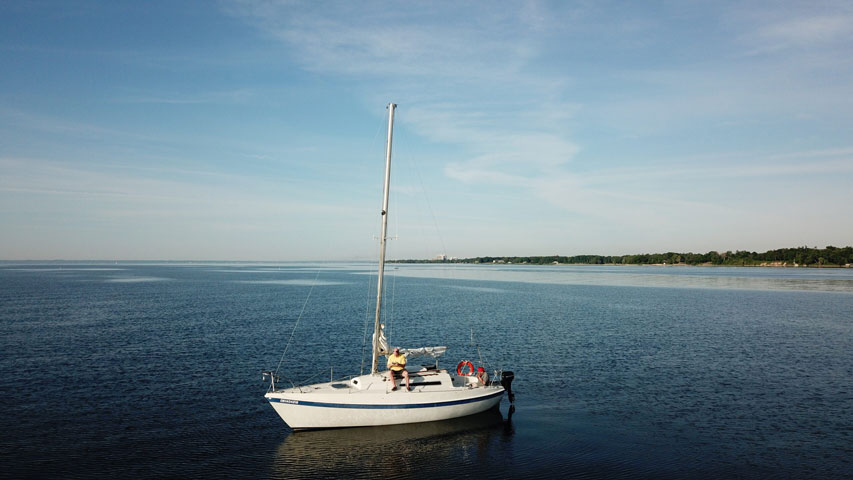Tips For Single Handed Sailing
Single-handed sailing can be euphoric, skipping over the water under your own steam, with nobody to worry about but yourself. But it isn’t always this easy. On Ask Precision Sails this week Darryl gives us some all-around tips and tricks for single-handed sailing practices.
“The number one rule for successful single-handed sailing is preparation, more preparation, and then even more preparation.”
Boat Preparation
Prior preparations is paramount with any single-handed sailing excursion you partake in. Nothing is more critical than preparing your vessel to suit every situation when sailing single-handed. It goes without saying that all your systems and rigging should be inspected and maintained BEFORE you set out on the water. You will be solely relying on all these systems whilst you are sailing and they all need to be in great condition and in good working order.
With regards to rigging it is best to set up systems that are easy to use and ideally run back to the safety of the cockpit. Systems like furling headsails are a great idea as they are easy to handle and reduce the need to go up on deck to make sail adjustments, allowing to furl and adjust sails directly from the cockpit if the wind picks up. For the times that you do have to go up on deck, it is essential that you have secure clip in points on the deck, so you can tether yourself. Diligently tethering yourself to an anchor point, every time you head up on deck, no matter the conditions, greatly increases your safety aboard.
The other system you might like to consider is the option to install an autopilot. Once a heading is selected this frees up your abilities to make sail adjustments, concentrate on watch, check the charts, or even just an opportunity to use the bathroom or have a bite to eat. Utilizing modern mechanics to make life aboard much easier and manageable with only one set of hands.
Personal Preparations
Practicing sailing tactics and basic sailing maneuvers is a great way to establish a set of processes of how it can be done the most efficiently and in a way that feels right for you. To then continually practice these processes will mean if a quick-changing weather pattern does come along or a problem arises you already have a pre-prepared game plan of how to tackle the situation and feel confident in your abilities.
Medical Preparations
All vessels should have a comprehensive first-aid kit and every captain should know how to use all the items inside, no matter how many people are on board. A fully stocked kit in a handy location will mean you are ready for any unexpected accident that might occur.
There are a number of sea safety courses that can teach you some valuable skills in basic first aid practices as well as techniques that are suitable for single-handed sailors too.
Communication Preparations
You might be setting out for a solo passage but it is still very important to check in with someone ashore to let them know your intended route and estimated time frame. Then having access to some form of communication whilst you are underway in case any changes arise to your planned route. By simply letting a family member or friend know your plan will ensure that someone is keeping an eye on your situation. If things do change and they don’t hear from you within the specified time frames they know when it is sensible to send out emergency assistance.
These are only but a few of the key tips and tricks to consider when attempting a single-handed sail. For more, watch here!


